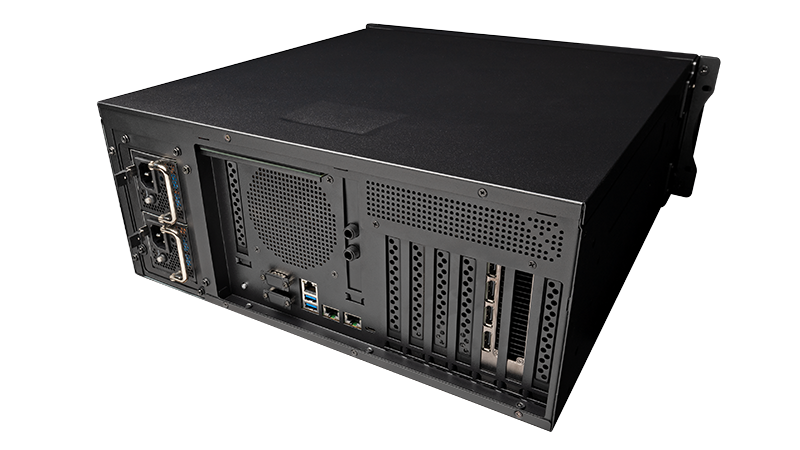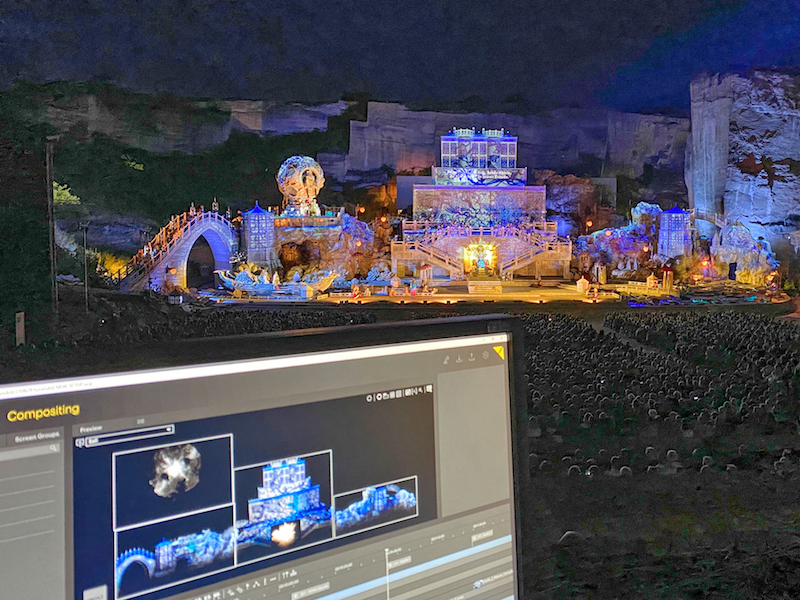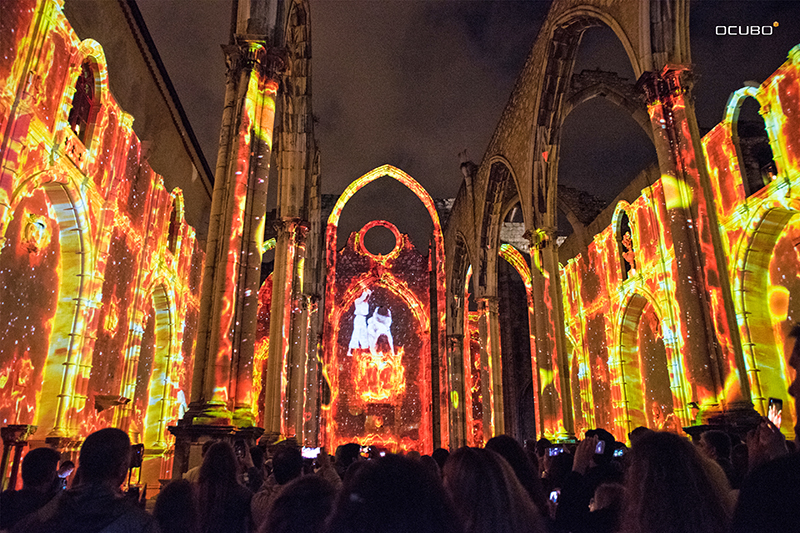
Founded in 1975, AV Stumpfl is an award-winning Austrian company that designs, manufactures, and markets a range of mobile and installation projection screens. Recently, the company has expanded into developing and manufacturing media servers—both software- and hardware-based solutions. Officially launched at the ISE exhibition in 2019, the PIXERA multi award-winning range of media servers has been growing and is getting on more and more projects around the world. The recently launched PIXERA four is a new media server hardware system, designed for highly demanding real-time graphics applications, uncompressed 8K playback, and virtual production setups featuring XR (extended reality), AR (augmented reality) and/or MR (mixed reality) components. [Read more about the PIXERA four’s features in this month’s Buyer’s Guide on page 46.]

The PIXERA media server range is a 64-bit system for real-time media processing, compositing, and management, based on the core theme of usability. “Users can gradually discover the options and features and can smoothly transition from being a beginner to becoming a true specialist,” comments Hans Christian Stucken, Global Marketing Advisor with AV Stumpfl GmbH. “Entering the world of professional media server solutions and projection mapping has never been easier.”

Building Virtual Worlds
PIXERA’s render engine can handle video files up to, and beyond, uncompressed 8K and is ideally suited for playing back HDR or 12-bit content. Recently, PIXERA media servers are being incorporated into the world of virtual production with mixed reality and extended reality applications. Related to that trend is, “Resource as Compositing,” a workflow feature that empowers PIXERA users to employ and interact with 3D worlds originating with other software environments (e.g., Unreal, Unity, Notch, etc.) in a simple and extremely effective way. “PIXERA users have had the opportunity to dive into virtual screens since version 1.0, where they would find a full 3D compositing space, that does not only allow for the implementation of video content, but of textured 3D objects as well,” explains Stucken. “With version 1.8, resources that contain their own 3D worlds have been integrated in a way so that their compositing is seamlessly combined with PIXERA.”
PIXERA version 1.8 was introduced in 2021 and is nominated for a 2022 Parnelli IT Award. As well as offering updated and enhanced timeline controls, version 1.8 also expands the possibilities for realizing virtual production setups that feature XR, AR, and/or MR components. Navigating inside the preview, editing perspectives inside the virtual world, and a host of other functionalities all happen by using familiar PIXERA tools. It’s even possible to place 3D objects and videos from PIXERA inside a compositing originating with one of the aforementioned resources. The ability to handle 3D scenes from different engines as compositing lays the foundation for using these resources as part of PIXERA-based productions in a user-friendly and truly effective way.
Introducing the PIXERA four Media Server
In terms of hardware, the latest system, which was only released a few weeks ago, is the new PIXERA four media server. The PIXERA four is now the top of the PIXERA line of media server hardware systems. It was designed for highly demanding real-time graphics applications and uncompressed 8K playback. It is being used for numerous virtual XR setups.
Features and highlights of the PIXERA four, a 4K and 8K media server include: 12G-SDI I/O support; 10GB/s data read default rate; and five PCI 4.0 slots for configuration flexibility; uncompressed 8K (4:4:4) 60fps content playback; AMD Performance CPU and 128GB RAM; available with 2 or 4 outputs; up to 61TB storage with 20GB/s available; dual 25Gbit/s network available; and a redundant power supply. The PIXERA four is compact with a depth of only 18.11” (46cm), designed with installation racks in mind. The company believes that it offers great ROI for XR, rental & staging companies, and installations.
The PIXERA Range
“Because PIXERA is offered as a software license or as a hardware platform, there is something for every project type in the PIXERA line,” says Conor McGill, CTS | Global Business Development Manager, PIXERA, who is based in the U.S. He firmly believes that PIXERA has a solution that will fit any end-user’s requirements. “If you need a robust solution for digital signage or small exhibits the PIXERA mini is perfect. The PIXERA one and two are the workhorses of the lineup, perfect for touring and corporate events. There is nothing that the PIXERA four can’t handle with its powerful real-time processing and extensive expandability. Finally, if you have your own server and still want access to the full PIXERA feature set, we’ve got you covered with one of our software dongles.”
If you are in the market for a media server, McGill is ready to demonstrate the product line for anyone. “We believe PIXERA offers a feature scope and user experience that will make it a universally adopted tool across the global place-based entertainment industry,” he says. “Even with so many early successes, we are still just getting started. Whether you come from live events, fixed install, or virtual production, we hope you’ll join us on this exciting journey. If you’re not sure just ask us for a demo, we’re more than happy to oblige.”

Easy Show Control & Automation Integration
AV Stumpfl have been expanding some of the options with PIXERA, especially focusing on simplified show control programming as well as integration with scenic automation with its PIXERA control. McGill highlights some of what’s new with this area of the line. “Building on the powerful and intuitive PIXERA screen building, pixel mapping, and content compositing workflow, PIXERA control liberates complex show control programming from the realm of professional software developers and puts tremendous power and flexibility in the hands of our users,” McGill explains. “Whether you need to interconnect and coordinate thousands of lights, sensors, relays, projectors, and widgets… or just make a big green PLAY button and call it up on an iPad, PIXERA control is a simple and reliable option.”
AV Stumpfl have been working with automation companies to better integrate movement of scenery with video and media. The aim is to make this integration smoother and tighter for productions to take advantage when conceptualizing the next big thing. A distributed integration and control framework empowers users to seamlessly host new functionalities within PIXERA and to control all aspects of an extended project environment. Third-party systems can communicate directly with the PIXERA API via dedicated modules, including systems from Beckhoff Automation, the Smart Monkeys’ ISAAC ecosystem, or Loupedeck custom consoles.
While the new features of PIXERA four, the ability to build virtual XR worlds, and easily create and integrate your control options are all major callouts for PIXERA, McGill brings it back to what they do best at AV Stumpfl. “For all the buzz surrounding our Unreal integration, all the fun and fancy projection mapping tools, and the exciting rollout of PIXERA control—one of PIXERA’s most appealing features is the reliable playback of myriad video and audio formats across multiple synchronized servers on diverse display endpoints,” he states. “Reliable, synchronized playback is sacrosanct, and we won’t knowingly introduce features that could compromise this core functionality.”
Stucken comments on the road PIXERA has traveled since its product introduction. “When we launched PIXERA in 2019, some industry veterans doubted whether we would be able to organically create and grow a strong user community almost from scratch. Well, it was—and is—a lot of hard work, but when I look at how many brilliant people are dedicating their time in 2022 to learning how to become professional PIXERA users, particularly in the U.S., it puts a big smile on my face.”
Related links:
https://pixera.one/en/hardware/media-servers-1/pixera-four
www.AVstumpfl.com


